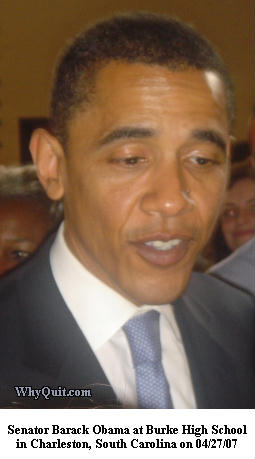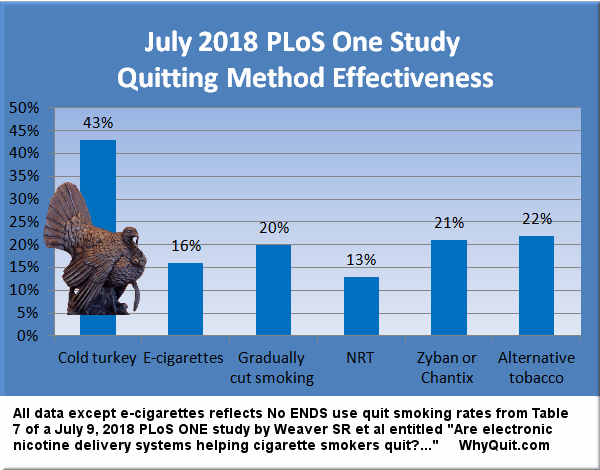
Obama can't quit smoking for Kinsley or America's youth
Michael Kinsley attacked president-elect Obama in a November 20 Washington Post op-ed for "fibbing about giving up cigarettes," asserting that he's setting a "deplorable example for young people." Obama must ignore the motivational bait Kinsley dangles before him.
 Michael Kinsley's attack last week focused on Obama's doctor's comments about his on-again, off-again smoking and roughly 21 months of claimed nicotine gum use. On one hand, Kinsley asserts that Obama's continued smoking sets a deplorable example for youth, "millions of whom Obama has inspired into active citizenship" and that "if he is still smoking, Obama is doubling his chance of an early death." On the other, Kinsley suggests that "Obama's steely calm is now one of our country's major assets. If he needs an occasional cigarette to preserve it, let's hand him an ashtray, offer him a light and look the other way."
Michael Kinsley's attack last week focused on Obama's doctor's comments about his on-again, off-again smoking and roughly 21 months of claimed nicotine gum use. On one hand, Kinsley asserts that Obama's continued smoking sets a deplorable example for youth, "millions of whom Obama has inspired into active citizenship" and that "if he is still smoking, Obama is doubling his chance of an early death." On the other, Kinsley suggests that "Obama's steely calm is now one of our country's major assets. If he needs an occasional cigarette to preserve it, let's hand him an ashtray, offer him a light and look the other way."
First, I am confident that Kinsley was not expressing an "early death" wish for our soon to be president. I think his ill-combined points either evidence the depth of healing needed to bridge America's red-blue political divide or reflect a serious lack of nicotine dependency understanding.
Regarding youth dependency concerns, Kinsley is correct. "Cinnamon Surge", "Ice Mint" and "Fruit Chill" flavors of nicotine gum, and Cappuccino flavored nicotine lozenges are at this moment moving into America's schools. President-elect Obama's chemical addiction to smoking and/or chewing nicotine will increasingly be used by young admirers as justification for their own experimentation. They understandably want to be just like him. But Barack cannot quit for the world's children any more than he can quit for his own daughters, Malia and Sasha, their mom, or for political pundits.
As Barack has hopefully already discovered, attempting to quit for others creates a natural sense of self-deprivation that devourers resolve and is a recipe for perpetual relapse. Deep down he already knows this critical truth, that he must quit for Barack. But proper motivational focus is easier understood than done, especially with attacks like Kinsley's suggesting the wrong path.
 Many scoff at assertions by experts that when it comes to dependence, nicotine is harder to beat than heroin or cocaine. How can nicotine's alert dopamine "aaah" sensation be more chemically captivating than heroin's numb dopamine "aaah," cocaine's euphoric "aaah" or alcohol's drunken "aaah"? How could a legal chemical that's marketed in neighborhood convenience stores frequented by children be in the same addiction league as methamphetamine, with its fast and racing dopamine "aaah" sensation?
Many scoff at assertions by experts that when it comes to dependence, nicotine is harder to beat than heroin or cocaine. How can nicotine's alert dopamine "aaah" sensation be more chemically captivating than heroin's numb dopamine "aaah," cocaine's euphoric "aaah" or alcohol's drunken "aaah"? How could a legal chemical that's marketed in neighborhood convenience stores frequented by children be in the same addiction league as methamphetamine, with its fast and racing dopamine "aaah" sensation?
Although easy to deny nicotine's grip, as America's leading cause of premature death we cannot deny its consequences when smoked. If Kinsley is correct and Obama is still smoking, statistically, his daughters stand a 50% chance that smoking will claim their dad 13 years early, and a 25% chance of it happening an average of 22.5 years prematurely.
Imagine dad's absence at their high school and college graduations, being a gradually fading memory at their weddings, and a slow tear at the birth of their first child. Imagine moving out of the White House early because dad's enslaved and fooled brain valued that next fix more than his own presidency.
But even here, such images and words, in doing it "for them," provide doomed motivation. While clearly they would taste and savor the fruits of dad's freedom and healing, the desire to some day experience the blessings of grandfather-hood must be "his."
It sounds heartless to suggest that a nicotine addict's enslaved mind values that next mandatory nicotine feeding more than their children or job. Clearly, it is untrue in regard to conscious and emotional affections. Sadly, research suggests that in regard to drug addiction it is true when referring to limbic brain neuro-chemical physiology and function.
A powerful dopamine "aaah" explosion occurs inside the brain within 10 seconds of smoking nicotine and within minutes of chewing it. While I'm sure president-elect Obama senses delight and pleasure when thinking about or being with his daughters, his brain's right insula does not punish him with the onset of increasingly intense crave anxieties if he goes a few hours without seeing them.
Unless eliminated quicker by stress related acids, alcohol use or acidic juices, the alkaloid nicotine's half-life in human blood serum is roughly two hours. Constantly rising and falling reserves bounce the dependent user between dopamine pathway replenishment "aaah"s and insula driven anxieties. The good news is that early and frequent replenishment make punishing anxieties, irritability, anger and associated depression almost totally avoidable.
This drug feeding cycle quickly leaves the user with little or no remaining memory of life prior to nicotine. As nicotine addicts, we were beat and rewarded into believing that nicotine use defined who we were, gave us our edge, helped us cope and that life without it was as unimaginable as trying to go without eating. Yes, our brain's survival instincts priorities teacher was fooled. Nicotine's "aaah" became as important as food's "aaah". Nicotine cravings became as coercive as food cravings.
Ask the next smoker you see to try to describe what it was like living inside their mind prior to getting hooked, going days, weeks and months without once feeling an urge or crave to use nicotine. Ask them to try to remember the mental quiet and calm their mind called home prior to climbing aboard nicotine's endless replenishment roller-coaster ride. They can't. None will be able to. It's what true drug addiction is all about, about forgetting the inner calm and beauty that was once us.
 I have two daughters too. On April 27, 2007 my oldest, Carmen, accompanied me to the Burke High School gym here in Charleston as Barack spoke before 1,500 at a rally. It was the same day that Barack and Michelle fell in love with Charleston's front porches.
I have two daughters too. On April 27, 2007 my oldest, Carmen, accompanied me to the Burke High School gym here in Charleston as Barack spoke before 1,500 at a rally. It was the same day that Barack and Michelle fell in love with Charleston's front porches.
As the Senator was leaving the rally I had Carmen reach through the crowd and hand him a copy of Joel Spitzer's free e-book "Never Take Another Puff." While I know he read the title (as he looked up and mouthed a warm "thanks"), I doubt he had time to read its contents. It's my hope he will and soon, and that he takes the article on page 86 ("Quitting for Others") to heart. Joel lives in Chicago too and is another of America's greatest treasures.
The election behind us, let's hope Barack now feels free to speak frankly about his dependency battle. Smokers have been lied to about new magic cures for so long that it's getting hard to believe. Our nation's leading cause of preventable death, 33.8 million daily smokers are dying for a voice within their government that will at last level with them.
A key DHHS Healthy People 2010 national health objective was to reduce adult smoking to less than 12%. During the past four years of the pharmacology cessation era, with cigarette taxes and prices skyrocketing, the adult smoking rate has only declined from 21 to slightly less than 20 percent. Why? [also see Healthy People 2020 goals]
I just can't seem to let go of Barack's advice not to be "hoodwinked" or "bamboozled" during the final hours of the campaign. In my mind, bamboozled was watching pharmaceutical industry financial influence rewrite official U.S. cessation policy. It actually grew so bold that in June 2000 a panel of experts, on which 11 of 17 members had pharmaceutical industry financial ties, declared it against U.S. policy for any quitter to empty their brain of nicotine and reach peak withdrawal within the 3 days normally required if going cold turkey. Instead it was now mandatory and official U.S. policy for all quitters to purchase and bring inside their brain expensive dopamine pathway stimulation chemicals for 10 to 12 weeks, and only then attempt to learn to adapt to natural stimulation.
Yes, our government was hoodwinked into effectively outlawing cold turkey quitting in America. It did so in the very year (2000) that the U.S. Surgeon General told us that, "historically, the great majority of smokers (more than 90 percent) who successfully quit smoking did so 'on their own.'"
Bamboozled is knowing that almost 40% of nicotine gum quitters have been hooked on the cure for longer than six months. Most were hoodwinked into believing that replacement nicotine is highly effective and that the nicotine in it somehow different from the nicotine in cigarettes and non-addictive. Kept hidden from them was the fact that the only seven trials to analyze over-the-counter use of the nicotine gum and patch found that within six months 93% of users had relapsed to smoking. Kept hidden was frightening math reflecting that while only 7% of gum users succeeded, that up to 6.7% were left hooked on the cure. Kept hidden were the only two studies to examine second time nicotine patch use, both of which found nearly a 100% relapse rate.
Hoodwinked and bamboozled is about more than 200 placebo controlled NRT, Zyban and Chantix clinical trials that were not blind as claimed, trials in which the pharmaceutical industry pretended that a nicotine addict badly in need of fix could not tell whether or not nicotine replenishment had actually occurred. If you'd joined a study hoping for 12 weeks of free nicotine lozenges, would you have been able to tell whether or not your lozenge contained nicotine? So could they. If you were convinced that you'd been randomly assigned to the placebo group, would you have stuck around for months and allowed researchers to toy with you? Neither did they.
While pharmaceutical quitting products easily and routinely defeat placebo users inside clinical trials, they fall flat on their face when going head-to-head against cold turkey quitters in real-world use, even at 4 weeks into quitting, when product users have another 4 to 8 weeks before attempting to adjust to natural dopamine pathway stimulation (see UK NHS Stopping Smoking Services data from 2004, 2005, 2006, 2007, 2008, 2009, 2010, 2011 and 2012 (on NHS Stop Smoking Services in England, April to December 2007; see April 16, 2008; also see 2006 Unpublished U.S. National Cancer Institute Survey of 8,200 quitters, as reported in the Wall Street Journal, Page A1, February 8, 2007; also see Doran CM, et al, Smoking status of Australian general practice patients and their attempts to quit [PubMed Abstract], Addict Behav., 2006 May;31(5):758-66; also see, Ferguson J, The English smoking treatment services: one-year outcomes, Addiction [PubMed abstract], 2005 Apr;100 Suppl 2:59-69 [see Table 6]; also see, Alberg AJ, et al, Nicotine replacement therapy use among a cohort of smokers [PubMed abstract], J Addict Dis., 2005;24(1):101-13; also see, SmokeFree London, Tobacco In London, Facts and Issues, [online PDF report, see Figure 14], November 26, 2003; also see Boyle RG, et al, Does insurance coverage for drug therapy affect smoking cessation? [free full-text], Health Aff (Millwood), 2002 Nov-Dec;21(6):162-8; also see, Pierce JP, et al, Impact of Over-the-Counter Sales on Effectiveness of Pharmaceutical Aids for Smoking Cessation [free full text], JAMA, September 11, 2002;288:1260-1264).

As indicated above, cold turkey has continued to prevail since this article was written a decade ago. Click the image to learn about this study and others.
I'm afraid culpability for keeping hidden a large body of research proving uneducated cold turkey quitting superior to pharmacology is greater than hoodwinked and bamboozled.
Driven by corporate profits, our nation's cessation policy is not only a complete failure and drowning in pharm industry financial influence, thousands of Americans have needlessly died. Think about it. What dependency understanding and learning takes place by chewing gum, slapping on a patch or swallowing a pill? None. What is being missed by smokers and health policymakers is that knowledge is a quitting method, that unlike failed placebo blinding, non-pharmacology science truly is science-based.
How to Meet America's 2010 National Smoking Reduction Goal
It will take bold, decisive and immediate leadership but there's still time for America to meet its 2010 goal of reducing adult smoking to less than 12%. Our nation's adult smoking rate declined from 23.3% to 19.8% during the nine years since pharmacology use was made mandatory. Dramatic increases in cigarette taxes and prices since 2000, pressures from public indoor smoking bans sweeping the nation, it is debateable whether any of this 3.5 percentage point decline is attributable to pharmacology.
If U.S. cessation policy remains unchanged, at this rate the nation's 2010 objective will not be met until 2023. The price of placing pharmaceutical industry profits above common sense will be millions of lives and possibly as much as $1 trillion in avoidable smoking related health care and productivity loss costs. Pharmacology has been a national disaster. What do we have to lose by returning to our historical cessation roots for the next two years?
It's time to fight fire with fire. We need an executive order that immediately suspends all recommendations of the June 2000 and May 2008 U.S. Guidelines for Treating Tobacco Use and Dependence. The order needs to direct the U.S. Department of Health and Human Services (DHHS) to immediately reverse the government's ban against quitting without purchase and use of pharmacology (make cold turkey quitting legal again).
The order should direct DHHS to immediately create and find avenues to nationally broadcast high quality cessation education programs which teach smokers both how nicotine enslaved their brain and how to navigate physical, emotional, subconscious and conscious recovery (link to free PDF book "Freedom from Nicotine - The Journey Home"). The order should require DHHS to create and send every town, city and county in America free video nicotine dependency recovery education DVDs that allow them to establish free, ongoing, community-based support and counseling sessions for area smokers. The order should stress the importance of creating meaningful program attendance incentives that effectively overcome cessation contemplation denial barriers, so that for the first time in American cessation history, education can work its magic on a scale never before seen.
It's time for America's 33 million nicotine addicts to stop being afraid to come home for a visit. Once here on Easy Street you'll find it's a keeper. Lots of words but only one rule to living on the free side of the bars. Do not listen to nuts like Kinsley advocating that it's ok to smoke the "occasional cigarette." It's exactly the same as him encouraging a recovering alcohol to take a sip. There's just one rule ... no nicotine today, Never Take Another Puff, Dip or Chew!
Related Articles
|

